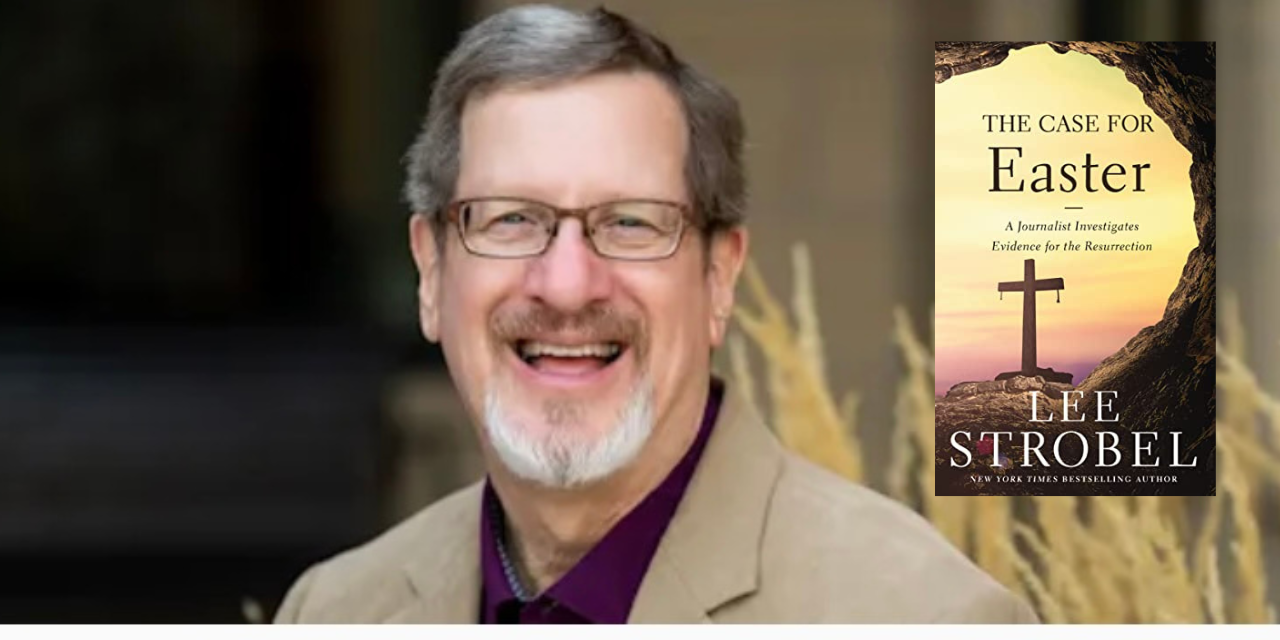At 72 years of age, Lee Strobel is a long way from writing, printing, and delivering a neighborhood newspaper out of his childhood basement in Arlington Heights, Illinois. Back then, Lee was more than just an aspiring teenage journalist. In fact, in addition to running his own paper, he wrote for several others and was possibly America’s youngest scribe in the business.
Now founder of the Lee Strobel Center for Evangelism and Applied Apologetics at Colorado Christian University, the New York Times best-selling author is still writing, including his latest book: Is God Real? Exploring the Ultimate Question of Life.
Yet, on this day, I had the privilege of talking with Lee about not just his life, but also one of the primary passions of it. Since his runaway bestseller, The Case for Christ, Reverend Strobel has analyzed and studied a broad range of claims related to the faith. A one-time atheist, the pastor and apologist originally started out to disprove the Resurrection. He thought he could wrap up the task in a weekend.
Not only did he come to the exact opposite conclusion, but the exercise so moved him that he decided to leave his job as a newspaper reporter and devote his full-time energy to writing and proclaiming the veracity of the Gospel.
On this eve of Easter weekend, Lee Strobel’s book, The Case for Easter: A Journalist Investigates Evidence for the Resurrection, is a wonderful affirmation for believers – and a convicting read for the skeptic or cynic.
Lee offers four areas of evidence to consider – and as a way to help people remember them – they all begin with the letter “e.”
First, Lee shows there is ample evidence that Jesus was executed. Over the years, various theories have sprung up claiming that He didn’t actually die on the cross. It’s called the “Swoon Theory,” and its supporters have contended he simply passed out. Lee and others say no way.
Even the Journal of the American Medical Association agrees. “Clearly, based on the medical and historical evidence, Jesus was dead even before the wound to His side was inflicted,” editors have stated.
Second, Lee says the existence and volume of the early reports surrounding Jesus’ death dismiss the suggestion the event evolved out of myth. The earliest Christian creeds heralded and proclaimed it.
Third, there is the empty tomb and the missing body. Lee points out that even skeptics of Jesus’ Resurrection didn’t question that the tomb was empty – they instead argued how it happened.
Finally, Lee Strobel suggests we can take encouragement from the high volume of eyewitnesses who actually saw Jesus alive following His crucifixion. For example, Jesus appeared to Mary Magdalene (John 20:10-18), He was seen on the road to Emmaus (Luke 24:13-32), He visited the disciples (Luke 24:33-49), and then Thomas (John 20:26-30), to name a few occasions. And then the apostle Paul tells us that Jesus even appeared to more than 500 of His followers all at once (1 Cor. 15:6).
The overwhelming evidence led Lee to accept Jesus Christ as his personal Lord and Savior on November 8, 1981. That decision changed the course of the Strobel family’s life – for eternity.
Everywhere Lee goes and speaks, he is asking: What’s your verdict?
“There’s a lot riding on your decision,” he says. “If Jesus really is the son of God, then your eternity hinges on how you respond to Him. The choice is yours.”
We are grateful for Lee Strobel’s decades of committed Christian service and commitment to making popular and training believers in the art of evangelism and apologetics.
Image credit: CCU and Zondervan






